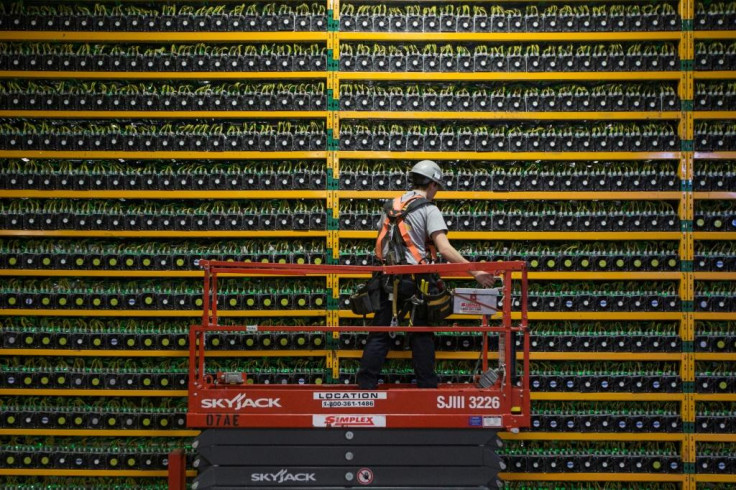Crypto mining must go back to the future
The very first Bitcoins were created in 2009, mined by the pseudonymous Satoshi Nakamoto on his personal computer.
Ask anybody to think of cryptocurrency mining, and they will likely imagine massive data centers with banks of sophisticated computer rigs gobbling up electricity as they compete to earn rewards in digital assets such as Bitcoin. They may also conjure up memories of the scramble in recent months after China sparked an exodus of crypto miners by declaring it had had enough with the massive depletion on energy supply.
As crypto rebalances its mining capacity across the world, with the United States seeing some of the biggest surges in production, it's the perfect time to reassess best mining practices for the industry.
Mining didn't always operate at this industrial scale. Cryptocurrency mining actually started on the common chip at the center of every computer—the CPU—meaning the original Bitcoin mining machines were PCs. The very first Bitcoins were created in 2009, mined by the pseudonymous Satoshi Nakamoto on his personal computer.
Over the years, and as the market capitalization of cryptocurrencies ballooned to $2 trillion, mining has become more reliant on sophisticated hardware, while the process has become more energy-intensive and lucrative.
Mining graduated from its early days focused on the CPU, the tiny but powerful central processing "brain" of our PCs, to the GPU. Graphics Processing Units are known for how they enable gaming by rendering precise images. GPUs are also a large past of the reason why our mobile phones are so powerful.
GPUs are capable of breaking complex problems into many tasks and resolving them all at once. And this is exactly what made them ideal for securing the blockchain networks underpinning a cryptocurrency such as Bitcoin, where miners could show their "proof of work" that the ledger of transactions was accurate.
For their labor, miners received crypto payouts, and over time, as the value rose exponentially, the incentives grew to find the most computational power capable of earning these rewards. These incentives sparked the development of customized, single-use chips — Application-Specific Integrated Circuits (ASICs), which are designed to complete very specific computing tasks.
The evolution ousted GPUs as the go-to hardware and led to the sad state of play today where chips are specifically manufactured for the sole purpose of earning crypto rewards and miners search for the most profitable sites from Iceland to Kazakhstan. This causes needless drains on the world's chip and energy supplies.
Cheaper, Cleaner Mining with the Humble PC
The crypto mining history actually shows us the way to a better mining future—a cleaner, cheaper and, ultimately, less risky future. By returning to the humble PC, we can unlock a new era of mining.
By using the CPUs in combination with a now-common area of our computers used for privacy-protecting data computation, it is perfectly feasible to create a decentralized network to make the massive mining farms obsolete.

The trick lies in separating out two computational activities that are currently bundled together in the proof of work blockchains like Bitcoin. Right now, all the computational power of the massive mining farms goes into securing the network, but is put to no other valuable use. However, in the alternative decentralized cloud system, the computation is detached from the consensus mechanism to secure the network through proof of work.
PCs—using the area known as a Trusted Execution Environment (TEE) embedded in most modern CPUs—can be used to lend computational power and help perform tasks required by network users. Here, the proof of work is literally proof that the CPU did the work. A set of nominated gatekeepers help secure the network and dole out rewards to the PC miners for supporting tasks.
The whole setup is friendly to the environment as it improves the overall availability of compute resources to the world and helps the security of all its customers. It makes the resources more efficient in terms of use and maintenance, by using just general-purpose computers and it reduces the need for a centralized party that builds and maintains large data centers. Finally, this doesn't require excessive energy consumption or wasteful use of single-purpose hardware.
This lower electricity consumption is also productive because every computation has a specific purpose rather than a marginal chance to win a block reward in the current Bitcoin practice. It is also noteworthy that empowering a network of PCs means there is no requirement for ASICs, the one-trick pony of hardware.
The manufacture and use of ASICs only create a "race to the bottom" as chips and engineering talent are gobbled up for no other purpose than to compete for limited resources for Bitcoin rewards.
China stated its crackdown was to eliminate wasteful use of energy and cryptocurrency's power usage has been questioned this year even among its biggest advocates, such as Elon Musk. It would be a shame if the seismic shift in the mining data centers landscape fails to address their biggest environmental challenges. While the industry thinks big, it should go small and find the solution in the humble PC.
(Marvin Tong is CEO of Phala Network, a trustless computation platform that enables massive cloud processing without sacrificing data confidentiality.)
This article is copyrighted by International Business Times, the business news leader






